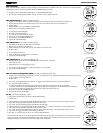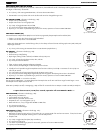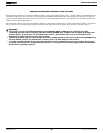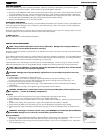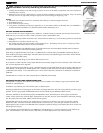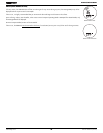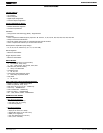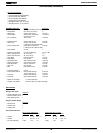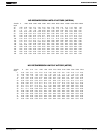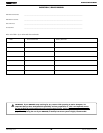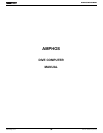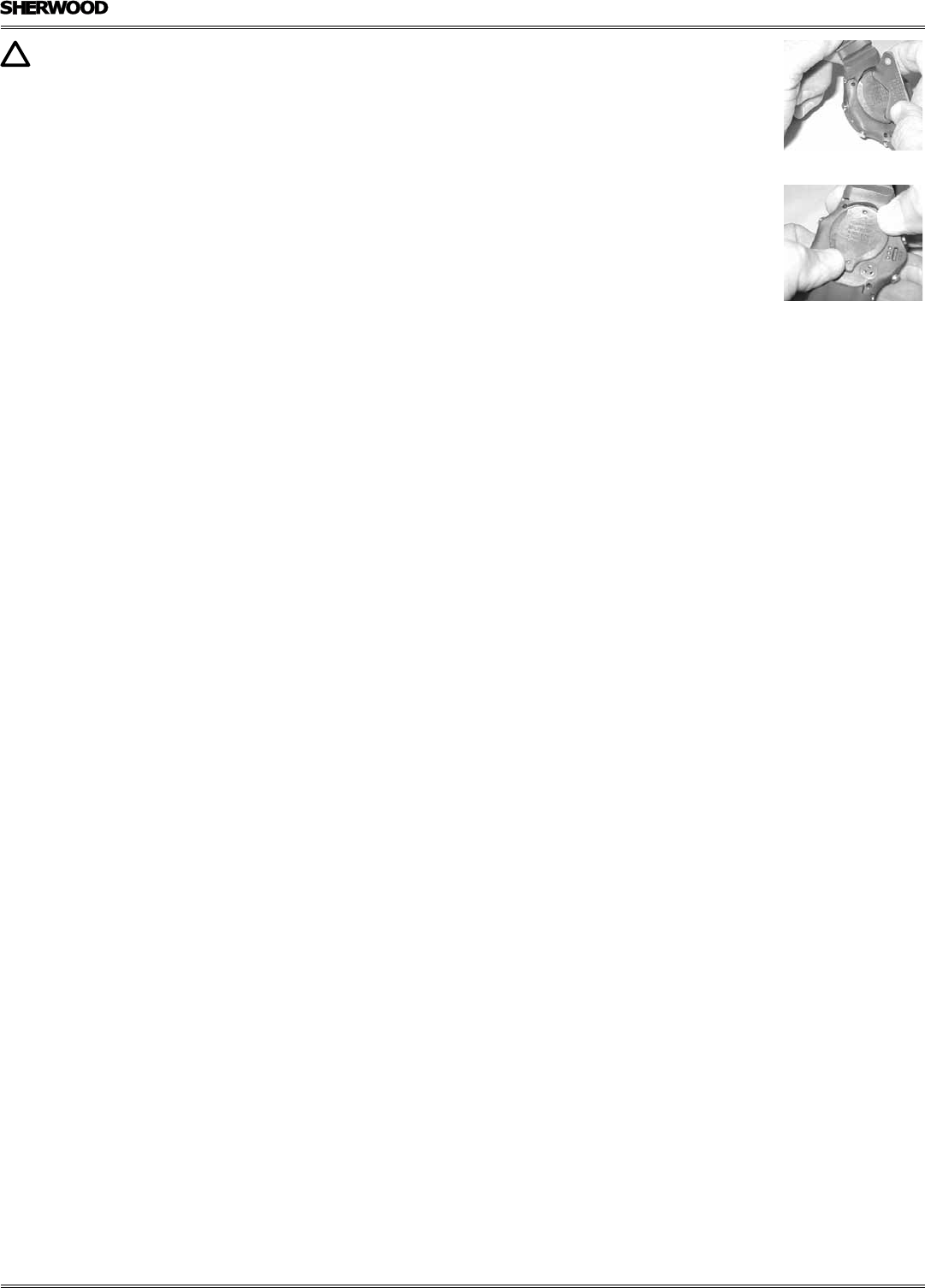
43
AMPHOS DC MANUAL
© 2002 Design, 2012 Doc. No. 12-5301-r01 (12/17/12)
NOTE: The Cover O-ring must be a genuine Sherwood part that can be purchased from an Authorized
Sherwood Dealer. Use of any other O-ring will void the warranty.
• Carefully place the Battery Cover (with O-ring) into position on the rim of the Battery Compartment, then press it evenly and
completely down into place.
• Maintain the Cover securely in place and turn it counter clockwise 10 degrees using the Cover tool (Fig. 120), or by pushing
the lower portion to the right while pushing the upper portion to the left using your fingers (Fig. 121).
Testing
• Activate the unit and observe the LCD is consistently clear and sharp in contrast throughout the screen.
• Set the Watch functions.
• Verify all Set Points prior to diving.
• If any portions of the display are missing or appear dim, or if a Low Battery condition is indicated, return your AMPHOS to
an Authorized Sherwood Dealer for a complete evaluation before attempting to use it.
ALTITUDE SENSING AND ADJUSTMENT
Prior to the first dive of a series of repetitive dives, Altitude (i.e., Ambient Pressure) is measured upon activation of Dive Surface
Mode and every 15 minutes until a dive is made or operation reverts to Watch Default Time.
> While it is operating in Watch mode after a dive, measurements are taken every 15 minutes during the 24 hour period after
surfacing.
> Measurements are only taken when the unit is dry.
> Two readings are taken, the second reading 5 seconds after the first. The readings must be within 1 foot (30 cm) of each
other to record that Ambient Pressure as the current Altitude.
The Mathematical Model in the AMPHOS accounts for the reduced No Deco Dive Times (NDLs) available based on National
Oceanic and Atmospheric Administration (NOAA) guidelines.
When diving in high altitude waters from 3,001 to 14,000 feet (916 to 4,270 meters), the AMPHOS automatically adjusts to
these conditions providing corrected Depth, reduced No Deco Dive Times, and reduced Oxygen Accumulation Times at Altitude
intervals of 1,000 feet (305 meters).
No adjustments are made during any time that the Wet Contacts are wet.
At an elevation of 3,001 feet (916 meters), Depth Calibration automatically changes from feet of seawater to feet of fresh water.
This is the first adjustment to the Algorithm.
When the Conservative Factor feature is set On, allowable dive times are calculated based upon the next higher 3,000 foot (915
meter) Altitude. All adjustments for Altitudes greater than 11,000 feet (3,355 meters) are then made to allowable dive times for
14,000 feet (4,270 meters). If the Conservative Factor is set On while at Sea Level, calculations are based upon an Altitude of
6,000 feet.
The AMPHOS will not function as a Dive Computer above 14,000 feet (4,270 meters).
UPLOADING SETTINGS AND DOWNLOADING DATA
The AMPHOS is configured with a Data Port that enables it to be connected to a PC USB port using a special Interface Cable
available as a separate option.
A USB Driver is provided as part of the interface system, a separate option.
The Settings Upload portion of the program can be used to set/change Main Time, Date, Set A group (Alarms), and Set U group
(Utilities). The Set F group (FO2) and FREE Mode Alarms must be entered using the AMPHOS's button controls.
Information available for retrieval (Download) from the AMPHOS to the PC Download portion of the program includes dive
number, surface interval time, maximum depth, elapsed dive time, start date, start time, lowest temperature underwater, sampling
rate, dive profile, Set Points, NiBG, O2BG, and Gas Switching events.
The AMPHOS checks for the presence of an interface device connection to the Data Port once every second while in Watch
Default Time mode. Checks are not made if the Wet Activation contacts are wet. Upon sensing an interface connection, the
requesting device (PC) connects to the AMPHOS and is prepared for Upload of settings or Download of data which are then initi-
ated using the PC program.
Prior to attempting to Download data from your AMPHOS or Upload Settings to it, review the Help section of the interface pro-
gram. Recommended is to print those sections of Help that you consider appropriate for your Interface activities.
Fig. 120 - BATTERY COVER
INSTALLATION
Fig. 121 - ALT BATTERY
COVER INSTALLATION





